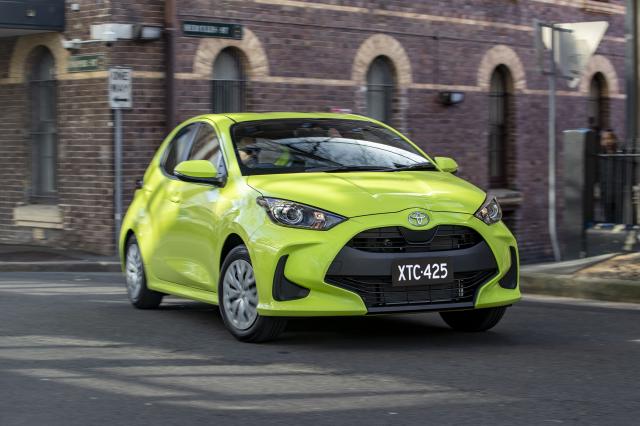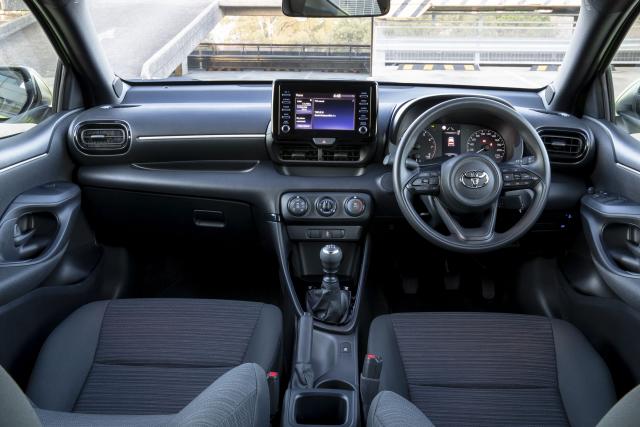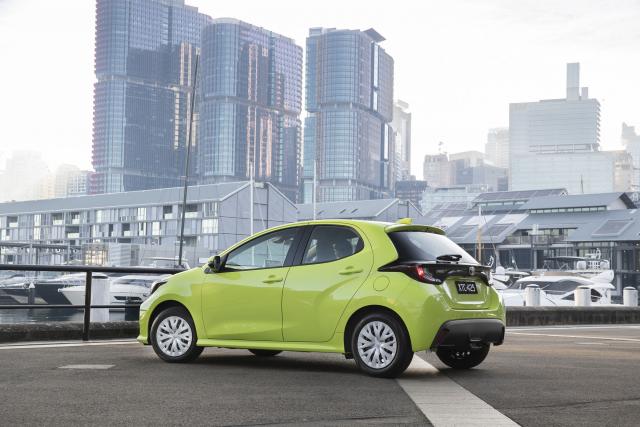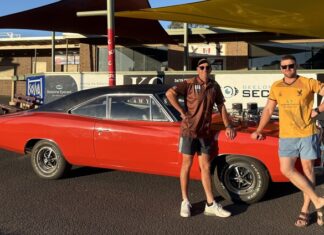It may be short on words but ‘family car’ is long on the desirable characteristics of a passenger vehicle: affordability, space, versatility, comfort and convenience, power reliability, fuel economy, safety and last, but not least, looks, all jostle to be taken into consideration.
This goes a long way to explaining the success of the five and seven-seat sports utility vehicle, or Mum’s minibus, the eight-seater people mover, which can take the kids and all their kit.
However, there is another side to family life. Sons and daughters leave home and start families of their own. It is often left to Mum and Dad to bring the family together with visits to their offspring.
A gas guzzling minibus is the last thing the downsized duo needs. This is where a small economical runabout comes to the fore. – something like the Toyota Yaris Ascent Sport hatchback, a versatile compact capable of carrying four adults, or a couple and all their luggage, the latter on a considerable road test distance.
At an affordable $22,130, plus on-road costs, the car is the entry level to the Yaris line and the only variant with a six-speed manual transmission. The others, including petrol/electric hybrids, have a direct shift CVT, which adds just $1500. A CVT-equipped hybrid on SX and ZR attracts a further $2000 over their equivalent petrol variants.
Ownership costs include a five-year warranty, extendable to seven years, up to 10 years on the hybrid battery and five annual services capped at $195 each.
Conveniently to hand on Ascent Sport is standard equipment which includes Apple CarPlay and Android Auto, LED daytime running lamps, tail and stop lights; auto retractable door mirrors with LED turn signals; and power windows.
For the first time on a Toyota vehicle in Australia there are safety features designed to make Yaris the world’s safest compact car. They include front-centre airbags, sensors that can detect vehicles or pedestrians at intersections when making turns and secondary collision braking.
STYLING
The all-new Yaris is shorter and lower than its predecessor, with a longer wheelbase (40 mm). Despite the lower roofline, interior headroom is not compromised, the driver and passengers sitting lower thanks to the new Toyota B-platform.
A sporty exterior boasts a stand-out cascading grille, longer bonnet, sculpted door panels, character lines and a shorter rear overhang.
There are 12 exterior colours, including Cherry Blossom in the case of the test vehicle, which elicited compliments from onlookers who marveled at the subtle change of hue from off-white to lavender, depending on the light.
INTERIOR
Toyota Yaris Ascent Sport has an all-black interior, offering an open, spacious and comfortable cabin with ample headroom and an up-market ambience with high-quality seat fabrics. Despite a wider centre console, there is no room for an armrest, hence no leaning post for the driver. Gearshift and cup holders take up the space.
However, the new platform allows the driver’s seat to be set lower and further back towards the centre of the car, creating an appealing driving position and helping to lower the vehicle’s centre of gravity by around 15 mm.
The steering wheel is set closer to the driver, with wider tilt and telescopic adjustments. Electric steering is tuned for a light feel at low speed and responsive feeling at high speed.
INFOTAINMENT
Driver information is sourced through a 7-inch touchscreen and a 4.2-inch multi-
information display in the instrument cluster.
Bluetooth connectivity includes phone and music. With enhanced voice recognition,
there’s access to Sir, Eyes Free, Google Now voice commands. AM / FM / DAB+ digital radio is in the hands of six speakers, while USB video playback is on offer when the vehicle is stationary.
ENGINES / TRANSMISSIONS
The new direct-injection three-cylinder 1.5-litre petrol engine’s 88 kW and 145 Nm forge gains of 10 per cent and 2.7 per cent over the previous 1.5-litre four-cylinder engine, the result of a lighter block and crankshaft, reduced frictional losses and high-speed combustion technology.
SAFETY
Advanced safety technologies include a pre-collision safety system with autonomous emergency braking, active cruise control, automatic high beam, and technologies to assist with cornering, staying in the intended lane and detecting speed signs.
A reversing camera and a full suite of brake assist and traction-control systems, including active cornering assist are also standard. Eight airbags include driver, front passenger, two front centre, two front side, two curtain shield.
The new front-row centre airbags – a first in class – are designed to offer additional protection in a range of accidents. They can act as energy-absorbing cushions between the driver and front passenger in side crashes, or in passenger-side crashes when the driver is the only occupant. They can also provide safety benefits in rollover accidents.
DRIVING
The initial plan was for the Ogdens to visit their daughter in Sydney from south-east Queensland without getting caught in the domestic air travel chaos, or risking catching COVID-19. Fortunately, the kind folk at Toyota Australia found a spare Yaris lying around and offered it up for the drive.
As we, the intrepid pair, were about to set off, came the news that an old family friend had died in Melbourne and the funeral was to take place while we were in Sydney. What were the chances of driving on to Victoria and back in the Yaris? Following a phone call to Toyota, every chance.
The result was a 3700-kilometre round trip in a vehicle that would have been far from the top of the list in which to tackle such an exhaustive exercise. How wrong we would have been.
The entry-level Yaris Ascent Sport had the last laugh, lapping up the highway kilometres, or taking on heavy traffic in the country’s two largest (and congested) cities. Although the lack of factory-fitted sat-nav was a drag. Google is no competition here.
The new 1.5-litre petrol engine produces more power and torque, while using less fuel than the 1.3 and 1.5-litre four-cylinder engines it replaces. Tagged with the ‘Sport’, engine performance is not all that impressive. In slow city traffic high revs are the key otherwise stalling is the downfall.
Toyota claims the new Yaris manual uses just 5.4 litres of fuel per 100 kilometres on the combined cycle. The test car clocked 7.9 litres per 100 kilometres while flitting around towns on the route and 3.7 litres per 100 kilometres on the open road. Total fuel bill came to $286.47, thanks, Toyota.
The little motor was quiet enough at low revs but let out a raspy reply when urged to work higher up the scale.
The manual gear shift at times was not of Toyota’s usual high standards and needed firm handling to avoid connecting with the wrong gear.
On the upside, the new platform underpins a significant increase in body rigidity, which contributes to agility, stable handling, ride comfort and lower noise and vibration.
A 270-litre cargo area incorporates a two-level deck board. Big items – two large suitcases in the case of our excursion – can be accommodated with 60:40 split-fold rear seat backs folded flat. Front door pockets take up to a dehydration-beating 1.5-litre bottle, rear door pockets up to a 600ml bottle.
SUMMARY
The test took place mostly under clear winter skies, all on sealed roads, the Yaris also coping with early morning frost in the Southern Highlands and being rain bombed on the Hume, all the way to drawing together relatives and friends – a genuine family car.
AT A GLANCE
Yaris Ascent Sport: $22,130 (manual), $23,630 (CVT)
Yaris SX: $27,020 (CVT)
Yaris ZR: $30,100 (CVT)
Yaris SX Hybrid: $29,020 (CVT)
Yaris ZR Hybrid: $32,100 (CVT)
Options
Premium paint: $500
Two-tone paint: $450









